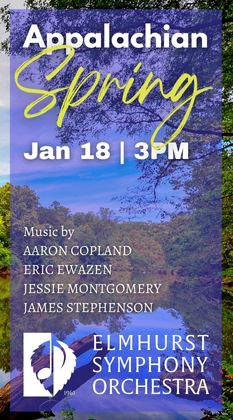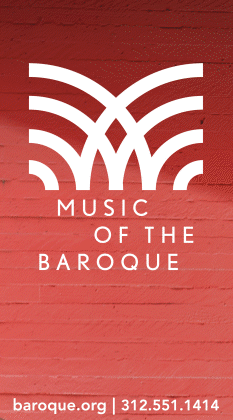Alsop, Szot and colleagues make a theatrical happening out of Bernstein’s problematic “MASS”

Say what you will, the performance of Leonard Bernstein’s MASS Saturday night at the Ravinia Festival proved one thing: it is possible to do a memorable, world-class presentation of a piece that isn’t very good.
The big event of Ravinia’s summer-long Bernstein centennial celebration was an undeniable spectacular with conductor Marin Alsop leading a performance with over 300 artists on Ravinia’s mainstage.
Provocative classical programming hasn’t exactly been the hallmark of the pop-focused Highland Park festival over the past decade. Yet one has to give credit to Ravinia for giving Bernstein’s sprawling MASS its belated Chicago-area professional premiere.
As I wrote in a column earlier this month, it’s hard not to feel that this year’s international Bernstein orgy is overblown considering the highly uneven quality of his output–West Side Story and a couple other works apart. American orchestras, in particular, would be better off exploring the vast array of neglected homegrown 20th-century composers whose excellent music continues to lie in the shadows.
But Bernstein still has the name and the celebrity 28 years after his passing. And without changing one’s mind about the wildly erratic MASS, Alsop, director Kevin Newbury and an armada of talented colleagues put across a performance of uncommon verve, vitality and imagination. It’s hard to imagine that MASS has ever received a better performance than that heard Saturday night in Highland Park.
Written at the request of Jacqueline Kennedy for opening night of the Kennedy Center in Washington DC, Bernstein’s MASS had its premiere in 1971, a tumultuous era in our nation’s history. Over two hours long in its original form, MASS received withering reviews, and vanished off the map soon after. Yet the work has managed to slowly creep in from the shadows and continues to have its advocates—notably Bernstein protege Alsop, who performed and recorded MASS with her Baltimore Symphony Orchestra a decade ago.
Though he had three years to compose it, Bernstein famously procrastinated until a few months before the scheduled premiere, and wound up having to enlist Broadway colleague Stephen Schwartz as co-librettist. (Even so the best lines in the piece came from an uncredited contribution by Paul Simon.)
The work essentially uses the Roman Catholic liturgy as scaffolding for a more secular anti-mass of sorts. Pace Wagner, the pious might view it as Bernstein’s stage-desecrating festival play. The Celebrant attempts to conduct a mass but is interrupted by a “Street Chorus” of young singers who respond in a variety of populist musical modes–rock, jazz and blues–voicing their skepticism and opposition to the mass service and to the church, which leads to a mental breakdown by the Celebrant.
The problem with MASS is not its eclectic mix of musical genres–it’s that much of the music simply isn’t very good. There are fleeting glimpses of Bernstein’s lyric beauty (“A Simple Song,” “I Go On”) as well as his gift for contrapuntal complexity–notably the frenzied buildup of tonality-bending choruses to the moment when the Celebrant smashes the Eucharist chalice.
But the populist elements remain stilted and, while cleverly crafted, the choruses feel like knockoff distillations of Stravinsky and Orff with a little extra pizzazz thrown in. Schwartz did a much better job himself (as composer and librettist) in his contemporaneous musical Godspell.
The other problem is the prevailing superficiality in dealing with cosmic issues. Bernstein revered music of Beethoven and Mahler above all others and was a first-rate conductor of both. Yet despite his facility and brilliance as a Broadway composer, whenever Bernstein tried to achieve a Mahlerian profundity in his “serious” works, the strain was manifest and the results banal and pretentious–as with the “Kaddish” symphony and many parts of MASS. Despite its ambitions, Bernstein in MASS doesn’t have anything deep or especially interesting to say about God, life, death, good or evil.
Even with fleeting moments of inspiration, MASS remains an overblown, indulgent mess. It doesn’t have Bernstein’s glitz or audacity, but Andrew Lloyd Webber’s underrated Requiem blends classical and rock elements more fluently as well as conveying his more traditional spirituality in a less self-aggrandizing way.
Still, with all its inherent weaknesses, Alsop and director Newbury served up a performance of such gleam and exuberance that at times it almost made one a MASS believer. Saturday’s Ravinia performance was a true “happening,” as it might have been called at the time of its premiere.
Newbury can be an uneven director, especially when trying to reinvent cornerstone repertory, as with his Faust at Lyric Opera last season. He is more convincing in contemporary operas (Fellow Travelers) and problematic pieces like MASS that need all the help they can get.
The subtitle of MASS is “A Theater Piece for Singers, Players and Dancers” and that is how Newbury approached it, in a masterful production that is the director’s finest local achievement to date. The center of the Ravinia stage was an open area where the Celebrant conducts the service, with the Chicago Symphony Orchestra and additional rock musicians on either side of the wide stage. The amplification was well done, discreet yet proper for the musical-theater style.
Newbury largely takes the libretto at face value, with the Celebrant attempting to perform the mass, and his being questioned and ultimately unhinged by the “Street Chorus” of youthful congregational skeptics. Newbury brought a massive injection of theatrical energy to the proceedings that carried a huge wave of momentum through its unbroken 106 minutes. Even in the hokey moments–children standing in the aisles holding candles in the finale–it was hard not to get swept up in the performance’s surging exhilaration–not least when the (excellent) Highland Park High School Marching Band comes marching down the aisles.
The production’s one miscalculation–something Alsop has done in her various performances–is “updating” the spoken epistles of the congregants to include current hot-button political issues. Yes, the Vietnam War may not have much contemporary freight today but preachy speeches about separating immigrant mothers from their children and an obvious “Resistance” speech against the current occupant of the White House felt too much like easy sops to the prevailing political sympathies of the North Shore audience (judging by the applause). Bernstein, of course, was reliably leftist in his politics but even in the countercultural MASS he refrained from any polemical attacks on Richard Nixon or screeds against the Vietnam War that would tie the piece to partisan politics.
In the central role of the Celebrant, Paulo Szot delivered a staggering performance. Clad in traditional Catholic collar and vestments, the Brazilian baritone brought both sinew and sweetness to his singing, as well as a remarkably secure high falsetto.
It was hard to believe that this was the singer’s debut performance in this role, with Szot bringing such physical grace and easy assurance to the priest’s service duties. Yet the convincing goodness and relaxed reverence of Szot’s Celebrant in the first half of the piece had the effect of making the priest’s sudden breakdown seem even more abrupt and unmotivated. (The staging paints it as equal parts personal psychological breakdown as well as a crisis of faith in response to his congregants’ skepticism.) Still, even if the broader dramatic arc remains a tough sell, Szot is such a good actor that he made every individual moment register with strong and credible dramatic impact.
Along with Szot’s Celebrant, it was the terrific 22-member “Street Chorus” that really sold this performance. Each of these talented young singer-actors made the most of their moments in the sun, singing with great feeling and exuberance, and etching individual characters among the worshipers in quick, dramatic brush strokes. The singers were Sumaya Ali, Aaron Blake, Matt Boehler, John Clay III, Nicholas Cunningham, Alexander Elliott, Erica Everett, Nicole Fragala, Devon Guthrie, Devin Ilaw, Morgan James, Alexa Jarvis, Mykal Kilgore, Meredith Lustig, Michael Maliakel, Timothy McDevitt, Barrie Lobo McLain, Kaitline Mesh, James Onstad, Michael Preacely, Isabel Santiago and Karim Sulayman.
Amid the dancers, marching bands, and electric guitars, the Chicago Symphony Orchestra musicians were almost supporting players–stationed in the shadows on the far ends of the stage (strings left side, winds and brass on the right). Yet the refinement and glow they brought to the somber beauty of the Meditation No. 1 and other “classical” moments provided the steady musical center of gravity this far-flung piece requires.
Stationed at the back of the stage, the chorus Vocality, directed by Josephine Lee, served up energized and powerful singing beyond their numbers. Likewise, the Chicago Children’s Choir, directed by Lee and Judy Hanson, provided comparably polished, bright-toned vocalism. Wyatt Parr and Myra Sahai sang sweetly as a convincingly efficient pair of altar children.
Keeping a firm hand on the rudder was Marin Alsop–placed discreetly on the side yet keeping Bernstein’s theatrical leviathan on track and leading this dynamic performance with sensitivity, animation and a big Lenny-esque generosity of spirit. At times one wanted more of the work’s jagged edges to show–the electric guitar seemed muted and smoothed over–but the big choral moments were as thrilling as the Celebrant’s interior doubts were touching.
Posted in Uncategorized





Posted Jul 29, 2018 at 11:25 pm by Fidèle
I was at the performance and was neither uplifted nor moved by the music. The cheap politicizing of art – music or theater – seems to be a trend or a platform used by some in the artistic world these days. I certainly did not applaud what I found to be another ploy by the political left to use culture to reinforce their agenda. Nothing seems to be sacred any longer and our society is poorer for this almost barbaric thirst for blood, the loss of nobility of spirit.
The celebrant certainly brought a high level of artistry to his role. The choruses were very good. Overall,this may have been an exuberant production but what is it ultimately- certainly not a Mass in the noblest, most sacred sense of the word!
Posted Jul 30, 2018 at 9:42 am by Lawrence Block
Fabulous review, Larry! You nailed it!
Posted Jul 31, 2018 at 12:34 am by Andrew
Fidèle, I’m glad that this production irritated you. “Some in the artistic world” have every right to defend their values through what we choose to create and share with you.
Posted Aug 02, 2018 at 1:11 pm by Fidèle
Andrew, The point I make is not against defense of one’s values but that of imposing them on others as though your truth is absolute. Create and share all you will but also respect others’ right to reject.
To put my comments in the proper perspective, to a deeply religious person, the Catholic Mass is our most sacred prayer and to see it presented in a secular production which mimicked the various parts of the liturgy, including the Consecration and Communion, was offensive and sacrilegious.
How do you think a devout Jewish or Muslim person would react if the most sacred prayer or rite of their faith were this put on display?